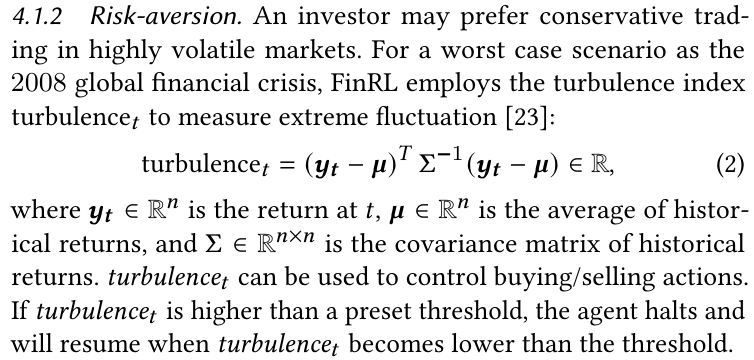Authors:
(1) Xiao-Yang Liu, Hongyang Yang, Columbia University (xl2427,hy2500@columbia.edu);
(2) Jiechao Gao, University of Virginia (jg5ycn@virginia.edu);
(3) Christina Dan Wang (Corresponding Author), New York University Shanghai (christina.wang@nyu.edu).
Table of Links
2 Related Works and 2.1 Deep Reinforcement Learning Algorithms
2.2 Deep Reinforcement Learning Libraries and 2.3 Deep Reinforcement Learning in Finance
3 The Proposed FinRL Framework and 3.1 Overview of FinRL Framework
3.5 Training-Testing-Trading Pipeline
4 Hands-on Tutorials and Benchmark Performance and 4.1 Backtesting Module
4.2 Baseline Strategies and Trading Metrics
4.5 Use Case II: Portfolio Allocation and 4.6 Use Case III: Cryptocurrencies Trading
5 Ecosystem of FinRL and Conclusions, and References
4 HANDS-ON TUTORIALS AND BENCHMARK PERFORMANCE
We provide hands-on tutorials and reproduce existing works as use cases. Their configurations and commands are available on Github.
4.1 Backtesting Module
Backtesting plays a key role in evaluating a trading strategy. FinRL library provides an automated backtesting module based on Quantopian pyfolio package [36]. It is easy to use and consists of various individual plots that provide a comprehensive image of the performance. In order to facilitate users, FinRL also incorporates market frictions, market liquidity and the investor’s degree of risk-aversion.
4.1.1 Incorporating Trading Constraints. Transaction costs incur when executing a trade, such as broker commissions and the SEC fee. We allow users to treat transaction costs as parameters in the environments: 1). Flat fee is a fixed amount per trade; and 2). Per share percentage is a percentage rate for every share, e.g., 0.1% or 0.2% are most commonly used.
Moreover, we need to consider market liquidity for stock trading, e.g., the bid-ask spread that is the difference between the best bid and ask prices. In our environment, users can add the bid-ask spread as a parameter. For different levels of risk-aversion, users can add the standard deviation of the portfolio returns into the reward function or use a risk-adjusted Sharpe ratio as the reward function.

This paper is available on arxiv under CC BY 4.0 DEED license.
